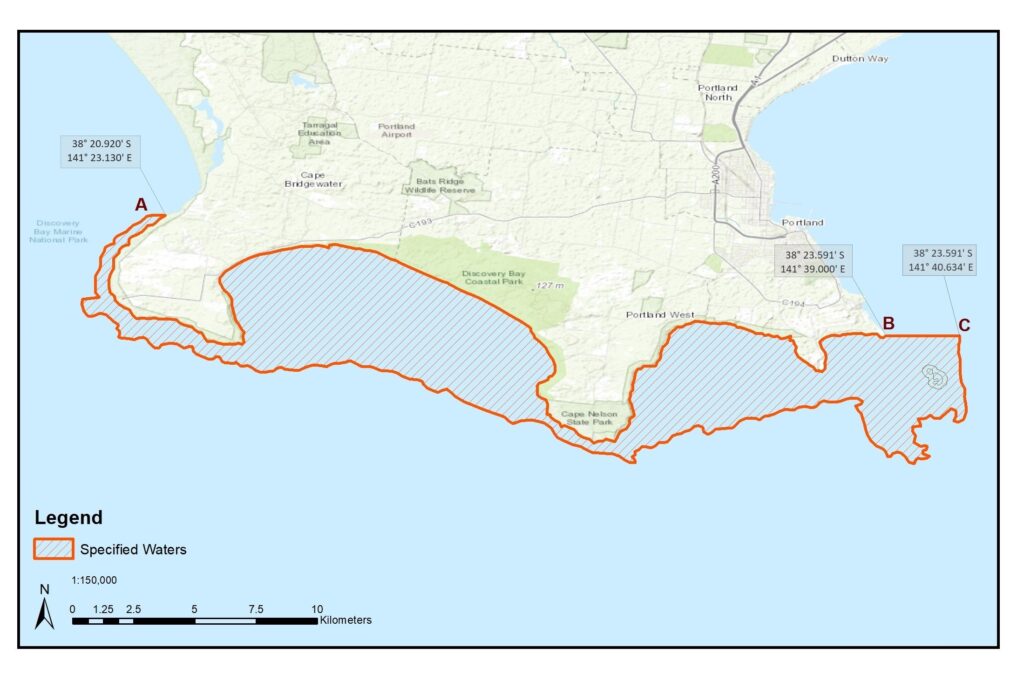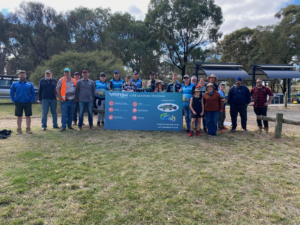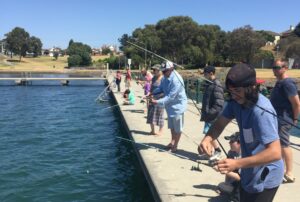February 27, 2024
Following the detection of Abalone Viral Ganglioneuritis (AVG, also known as abalone disease) in South Australia, the Victorian Fisheries Authority have taken swift action to assist in managing the outbreak through issuing a Fisheries Notice.
Abalone Viral Ganglioneuritis (AVG) is a viral disease which affects the nervous system of abalone and results in the foot curling up, swelling of the mouth, leading to weakness and death of abalone. There are no effects on human health.
On 23 February 2024, AVG was detected in South Australian waters near Port Macdonnell, in SA’s south-east. In response, the Department of Primary Industries and Regions (PIRSA) declared a South Australian AVG control area and restrictions are in place.
To support containment of AVG, the Victorian Fisheries Authority have issued a Fisheries Notice which has implications for recreational fishers coming back to Victoria after fishing or diving in the South Australian AVG control area from 23 February 2024 and prohibits any recreational or commercial fishing gear used in the South Australian AVG control area from being used in Victorian waters. No live abalone caught in the South Australian AVG control area can be taken into Victoria.
SOUTH AUSTRALIAN AVG CONTROL AREA
As per the Department of Primary Industries and Regions (PIRSA), the South Australian AVG control area spans the coastline from Nene Valley in the west to the South Australian–Victorian border in the east and reaches 5 nautical miles (approximately 10 km) out to sea.

AVG VICTORIAN PROTECTION AREA
AVG was detected in the Portland area in mid-2021. An area near Portland, in south-west Victoria, remains closed to all abalone fishing to protect stocks and assist their recovery until 30 June 2024.
The AVG control area declared by the Victorian Fisheries Authority is between Whites Beach and Point Danger, inclusive of Lawrence Rocks.

WHAT CAN WE DO TO STOP THE SPREAD?
AVG can spread through the water from infected abalone or abalone product (offal, shells or mucus), through fishing equipment (including wetsuits, anchors, rock lobster pots, ropes, rods and lines) and by people who have come into contact with infected abalone or bottom habitat.
CLEAN. CHECK. DRY.
Moving boats and other vessels as well as fishing equipment from waters with marine pests to new locations can increase the risk of spreading these pests to new waters.
All users of the marine environment have a role to play to avoid spreading marine pests to other locations. Parks Victoria have suggested using good vessel hygiene through the ‘Clean. Check. Dry’ method.
Good vessel hygiene through the ‘Clean, Check, Dry’ method means:
- Check any equipment and vessels that have been in marine waters for pests
- Clean them in freshwater
- Dry the equipment before moving to a new marine location.
Other tips to help prevent the spread of marine pests:
- Use fresh water to throughly wash down boats, vessels, fishing gear, wetsuits, water toys and other marine equipment after use.
- Dry boats, vessels and other marine equipment throughly before moving to other locations.
- When moving boats and marine equipment from areas known to have marine pests be vigilant in using the ‘clean, check, dry’ method before entering other waters.
If you find an abalone that you think is sick, anywhere in Victoria, please call the 24-hour Emergency Animal Disease Watch Hotline on 1800 675 888.








